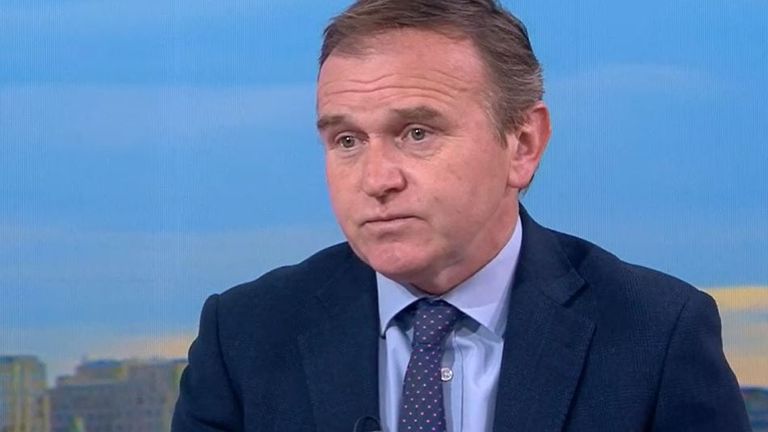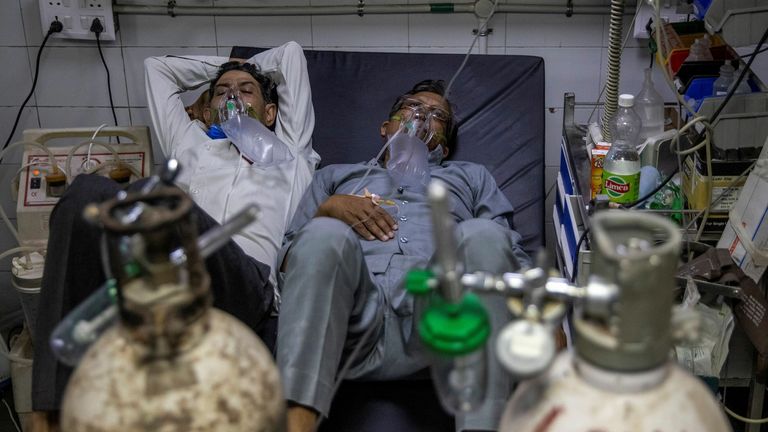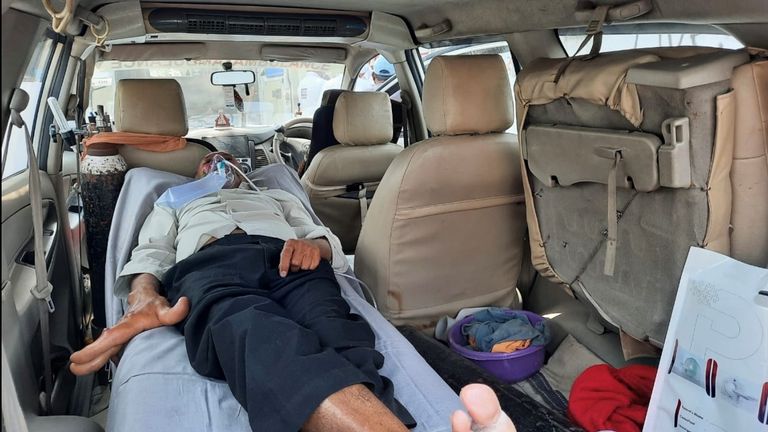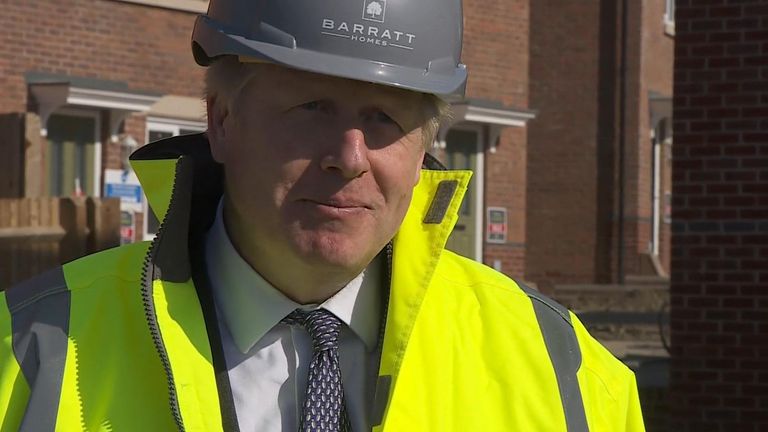COVID-19: Does the Indian variant make vaccines less effective and how concerned should we be?
A new double mutation COVID-19 variant is thought to be behind a sudden surge in cases in India that has overwhelmed hospitals.
The variant was only confirmed on 25 March by the Indian government so the data are still not 100% clear on its effects when compared to existing forms of the virus.
However, scientists and doctors are concerned this particular variant could be more transmissible and may even make vaccines less effective.
Sky News looks at what we know about the new variant.
What is the new variant?
Its official name is B.1.617, but is being called the Indian variant.
Viruses regularly mutate but most are insignificant, however, some mutations can make the virus more infectious, deadly or resistant to vaccines.
The Indian virus is one of those – especially because two mutations have come together to help infect cells and evade the immune system.
It has evolved independently but has the same mutation as the Californian variant and nearly the same as the South African and Brazil/Manaus ones.
In lab tests, the South African variant (B.1.351) and Brazil variant (P.1) both have a key mutation, E484K, which can help the virus evade antibodies produced by vaccines or by having had COVID-19. It is also more transmissible.
The Californian variant (B.1.429), discovered in December, carries the L452R mutation that makes it about 20% more infectious.
The Indian variant has the E484Q mutation, which is very similar to the one found in the South African and Brazil variants, and also has the L452R mutation found in the Californian one.
What is happening in India?
Cases in India have risen rapidly since mid-March after weeks of steady decline.
Hospitals are becoming overrun and they are running out of ventilators, with New Delhi placed under a week’s strict lockdown from 19 April.
There is a worry India’s second wave is even worse than appears, as scientists are concerned about figures being under-reported.
India also does not have as comprehensive a genome sequencing programme as the UK so cases of the Indian variant there are likely to be higher than reported.
“The exponential rise is quite staggering,” Dr Deepti Gurdasani, clinical epidemiologist and senior lecturer in machine learning at Queen Mary University of London, told Sky News.
“We first saw the rise in Maharashtra state, then other states are seeing a rise.
“What seems quite clear is there’s a rise and the new variant has become dominant in India.”
Is the Indian variant more transmissible and will vaccines still work against it?
Dr Gurdasani, who trained as a doctor and worked in India for 10 years, said it is “very likely it’s more transmissible”.
She said: “There are two mutations here. The first is similar to the Manaus variant and we know that is affecting vaccine effectiveness.
“The second is the same as the Californian, which has been associated in labs with escaping immunity – both of antibodies and T-cells – and also increased transmissibility.”
She continued: “This is quite worrying, it builds a really concerning picture as it ticks all the boxes for rising cases and outcompeting the vaccine.
“We don’t have definitive data but we can see from the other variants there’s more than enough to be concerned about.”
Dr Gurdasani added that the Indian variant shares the same mutation as both the South African and Manaus variants, which has been associated with a reduction of effectiveness in the Oxford-AstraZeneca, Johnson and Johnson and Novavax vaccines.
Should people in the UK be concerned?
Boris Johnson has postponed his trip to India due to the surge in cases and shortly after, India was added to the UK’s “red list”, where arrivals from certain countries have to go into hotel quarantine.
Several scientists have called for India to be on the red list, including Dr Gurdasani, although she added that the system “doesn’t work because by the time a variant is here, it’s too late”.
“Because we are so far into our vaccination programme and if this variant means a lower vaccine effectiveness, if this becomes dominant in the UK it will be catastrophic,” she added.
“India did not take pre-emptive action and the situation is really dire – we need to start acting before it gets as bad as India.”
Professor Christina Pagel, a member of the Independent Sage committee and director of clinical operational research at University College London, had also called for India to be on the red list.
She said if the UK’s vaccination programme goes to plan it will still be the end of July before every adult has one dose, as she added that since UK schools opened, the Indian variant is the fastest growing.
It is doubling every week, as did the Kent variant when it was detected in September, but is doing so under “much tighter restrictions and more vaxxed people”, she said.
The British government has said the Indian variant is a “variant under investigation”, not a “variant of concern”, due to a lack of evidence, so surge testing or forensic contact tracing are not taking place.
Prof Pagel said: “Because we are very good at sequencing, we might be the first country to provide such definitive evidence. But by the time we do, B.1.617 is likely to be quite widespread and it might be too late to contain it.”
She predicts that with the current growth rate, the Indian variant could be dominant by the end of June.
Source: Read Full Article









